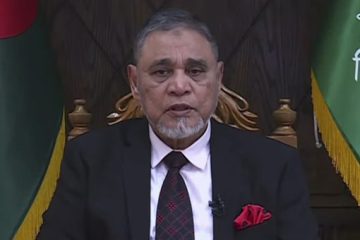MDG Goals
Bangladesh top achiever along with Cambodia
Bangladesh, jointly with Cambodia, according to a new study topped the chart of the least developed countries in achieving Millennium Developed Goals thanks to its steady progress in major targets.
The first of its kind study by the Centre for Policy Dialogue said both countries were likely to meet eight out of the 14 targets under review, while they made progress in four other areas. It was conducted by CPD Distinguished Fellow Debapriya Bhattacharya and his three researcher colleagues Towfiqul Islam Khan, Umme Salma and Gazi Joki Uddin.
The report was disclosed at a dialogue titled: Delivery of the MDGs in LDCs and reflections on Post-2015 Issues. It was jointly organised by CPD and Friedrich-Ebert-Stiftung — a foundation of the Social Democratic Party of Germany — office in Bangladesh, at the Brac Centre Inn in the capital yesterday.
“Bangladesh, however, is off-track in two areas: proportion of land area covered by forests and employment to population ratio, where the situations have deteriorated since 1990,” said Debapriya during the presentation.
Bhutan came third in the Country Ranking based on the MDG Index, while Rwanda secured the fourth place. Mali and Nepal took the fifth position jointly.
The report said that four African countries were at the bottom of the list.
The study also revealed that 46 out of the 49 LDCs will achieve at least one target among the 14 indicators. Mozambique, Sierra Leone and Somalia are unlikely to meet any of the targets.
Bangladesh is likely to meet targets in proportion to population below minimum level of dietary energy consumption, net enrolment ratio in primary education, ratios of girls to boys in primary education, under-five mortality rate, infant mortality rate, proportion of one-year-old children immunised against measles, maternal mortality ratio and HIV prevalence among population aged 15-24 years.
The four other areas where the country has made substantial progress are: proportion of population below poverty line, literacy rate of 15 to 24-year olds (men and women), proportion of population using an improved drinking water source, and proportion of population using improved sanitation facilities.
-With The Daily Star input




















